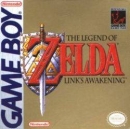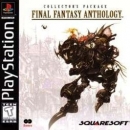Modern big out-of-order cores, with big caches and shorter pipelines, have a high baseline of performance, and have less room for optimization except in the use of newer SIMD (like newer SSE, AVX, etc. on x86 architectures). Does Espresso have special SIMD that developers are underutilizing?
Here's an example of the optimization problem:
- A 360 core has a theoretical IPC of 2.0 but baseline IPC of say 0.5 @ 3.2GHz for a total 6.4 Giga inst theoretical, 1.6 Giga inst baseline per second.
- A Wii U core has a theoretical IPC of 3.0 but baseline IPC of say 2.0 @ 1.25 GHz for a total 3.75 Giga inst theoretical, 2.4 Giga insta baselineper second.
Cool, the Wii U's cores are 4 times better on baseline (that's a much better architecture). It should make sense that this is so, otherwise Wii U could not use such a low core clock frequency and still match or beat the 360.
But oh oh - look the Xbox 360 has 300% room to optimize between average and peak, while the Wii U has only 50% room. This is called diminishing returns. Further typical CPU optimization, is likely to yield more speedup for the 360 than the Wii U.
Since Wii U is running closer to it's ceiling as baseline, further increases take more work. Also a 0.1 IPC improvement becomes a 20% improvement for X360, and 5% improvement for Wii U. 5% improvement from 20fps is just 21fps  .
.
Then there's the SIMD story. Theoretical max for 360 would be 3.2 Giga SIMD vector instructions, and theoretical max for Wii U probably 1.25 Giga. Again, use more SIMD - benefit 360 more than Wii U. Diminishing returns for Wii U  .
.
Edit:
From the article you quoted:
"However, some code could see substantial improvements that did mitigate the lower clocks - anything up to a 4x boost owing to the removal of Load-Hit-Stores, and higher IPC (instructions per cycle) via the inclusion of out-of-order execution."
4x boost in IPC, spot on with what I was saying. Think about the diminishing returns I mentioned, it's obvious.
"we did have to cut back on some features due to the CPU not being powerful enough."
So they would have to improve just to match the PS3/360?















































